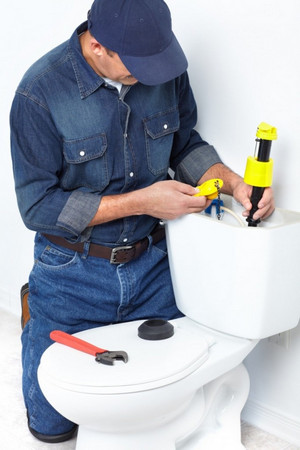We’ve all been there – you flush the toilet, and instead of a powerful, swift swirl, you’re met with a disappointing, weak flush. Low toilet flush pressure can be a nuisance, causing inconvenience and potential embarrassment. But fear not! In this guide, we’ll walk you through the steps on how to increase toilet flush pressure in your house, ensuring that your bathroom experience is smooth and efficient.
Understanding the Causes of Low Toilet Flush Pressure
Before we dive into the fixes, it’s essential to understand why you might be experiencing a low pressure toilet flush. Various sources, including mineral buildup and blockages, can cause this issue. Identifying the problem is crucial to finding the right solution, so take a moment to diagnose your toilet’s condition before proceeding. And remember, safety first! Always shut off the water supply before attempting any fixes.
Tools and Materials Needed
To get started, gather the necessary tools and materials for the task. You’ll need basic items such as a plunger, a toilet snake, cleaning supplies, and possibly replacement parts like a flapper valve or fill valve. These tools and materials will be crucial in increasing toilet flush pressure, so ensure they are on hand before you begin.
Step-by-Step Guide On How to Increase Flushing Pressure in Toilet
Preparing for the task
Turn off the water supply before working on your toilet, and empty the tank to ensure a dry workspace.
Identifying and removing clogs or blockages
If your toilet is clogged, a plunger can work wonders. Place it over the drain and apply firm, even pressure. A toilet snake can be used to clear the blockage effectively for stubborn clogs.
Addressing mineral buildup
Mineral deposits build up over time and limit water flow. Use a cleaning agent to dissolve mineral deposits in the flush holes and clean the rim jets thoroughly.
Replacing old or worn-out parts
Sometimes, low flush pressure is due to damaged or outdated components. Consider changing the flapper or fill valve to increase toilet flush pressure and water flow.
Adjusting water pressure
Check the water pressure regulator to see if it is working properly. If necessary, increase the water pressure to improve the flush performance.
Checking for leaks and testing the flush
Tighten any loose connections as needed. Then, test your toilet’s flush to ensure it’s working efficiently.
Tips and Maintenance
To maintain your toilet’s flush pressure in the long term, follow these tips:
- Perform regular checks to catch issues early.
- Consider eco-friendly and low-flow toilet options to save water.
- Stay proactive in your toilet’s maintenance to prevent future problems.
Conclusion
Having a toilet with strong flush pressure is essential for a hassle-free bathroom experience. If you’ve followed our guide on how to increase toilet flush pressure and are still experiencing issues or any other plumbing concerns, remember that you don’t have to tackle them alone. At New Flow Plumbing, we provide top-notch plumbing services to ensure your home’s system runs smoothly.
Our professional and friendly plumbers are just a phone call away, ready to help you with any plumbing problem. Whether it’s fixing low flush pressure, addressing leaks, or handling any plumbing emergencies, we’ve got you covered.









